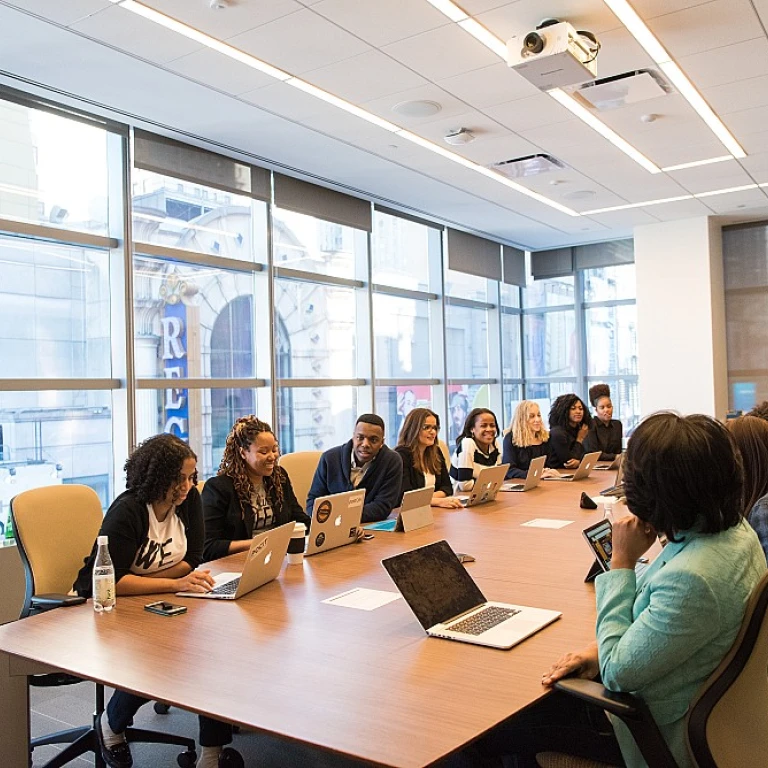Understanding the Importance of Team Building
The Crucial Role of Team Building in the Workplace
In many workplaces, team building activities are often perceived as mere opportunities for fun and entertainment. However, their significance goes far beyond that. These activities play a pivotal role in boosting employee engagement, fostering a sense of unity, and improving overall productivity.
Team building is vital because it directly addresses key aspects of workplace dynamics such as trust, communication, and collaboration. When employees participate in group activities or friendly competition, they learn to trust one another, enhancing their communication skills. Whether it’s a small team or a large group of team members, building games and exercises encourage participants to work towards common goals, ultimately strengthening the team as a whole.
Another crucial element is the development of problem-solving skills. Activities like scavenger hunts, escape room challenges, or virtual team building exercises provide a platform for employees to tackle problems creatively and collaboratively. This not only improves individual problem-solving skills but also helps in cultivating a culture of cooperation and innovation within the team.
Furthermore, these activities offer team members the chance to learn about each other in a non-work, informal setting, promoting a deeper understanding and respect among peers. This bonding can transform teams by enhancing the work atmosphere and making it more enjoyable, which leads to a high energy and morale boost.
For organizations aiming to make a significant impact through team building, it's essential to consider the timing, type of activities, and size of groups. Tailoring team building exercises to the unique needs and preferences of the team will yield the most effective results. For insights into implementing comprehensive strategies, explore engaging team building activities for the workplace.
Key Elements of a Successful Team Building Experience
Crafting the Ideal Environment for Team Collaboration
The success of a team building activity often hinges on several crucial elements that create a conducive environment for collaboration and camaraderie. To design experiences that foster team bonding and holistic employee engagement, it is essential to understand the underlying components that contribute to a successful team building venture.
1. Purpose and Objectives: Before embarking on any team building exercise, clearly define the goals you want to achieve. Whether it’s enhancing communication skills, improving problem-solving abilities, or simply ensuring everyone has fun, these objectives will guide the selection of activities.
2. Inclusive Participation: A successful team building experience accommodates the preferences and needs of all team members. Consider the group size and diverse personalities to select activities that everyone can enjoy, ensuring no one is left out.
3. Balance of Entertainment and Challenge: The activities should strike a balance between being entertaining yet challenging enough to keep participants engaged. Games like scavenger hunts or escape rooms provide a friendly competition that encourages teamwork and learning.
4. Real-World Application: Choose activities that mirror real-world dynamics. This could include scenarios that enhance teamwork under pressure or those that improve time management skills, just like in an office setting.
5. Flexibility and Adaptability: Ensure that the activities are flexible to take into consideration last-minute changes in team size or unforeseen obstacles. An adaptable approach keeps the group excited and prevents disengagement.
For more comprehensive insights into designing engaging team building activities, you may want to explore engaging team building activities for the workplace.
By focusing on these elements, organizations can create meaningful team building experiences that not only boost employee morale but also contribute to a more cohesive work environment.
Overcoming Common Challenges in Team Building
Addressing the Challenges of Team Building
While team building is essential for fostering employee engagement, it is not without its challenges. Understanding and overcoming these hurdles is crucial for creating meaningful experiences that truly benefit your team. Here, we explore some common obstacles and how to tackle them effectively.
Time Constraints and Scheduling Conflicts
One of the most significant challenges is finding a time that works for everyone. With diverse schedules and responsibilities, aligning the entire team can be daunting. To address this, consider planning activities well in advance and using scheduling tools to find the best time for most team members. Additionally, offering a mix of virtual team building activities can provide flexibility and ensure greater participation.
Engagement Levels and Interest
Ensuring that all team members are engaged and interested in the activities is another common issue. To combat this, involve employees in the planning process. Allowing them to suggest or vote on activities can boost interest and investment. Consider incorporating a variety of activities, from high-energy games to problem-solving exercises, to cater to different preferences and keep everyone engaged.
Group Size and Dynamics
The size of your team can significantly impact the effectiveness of team building activities. Large groups might struggle with communication, while smaller groups may lack diversity in ideas. Tailor activities to your group size, ensuring they promote communication skills and team bonding. For larger teams, breaking into smaller groups for activities like a scavenger hunt or escape room can foster more intimate interactions.
Measuring Success and Impact
Another challenge is determining the success of team building initiatives. Without clear metrics, it can be difficult to gauge the impact on employee engagement. Establishing goals and using feedback tools to assess outcomes can provide valuable insights. This step is crucial for refining future activities and ensuring they contribute positively to the workplace environment.
By acknowledging and addressing these challenges, companies can create team building experiences that are not only fun but also impactful. For further insights on boosting motivation in customer service roles, visit this resource.
Innovative Team Building Ideas for Modern Workplaces
Innovative Approaches to Boosting Team Collaboration
When it comes to today's modern workplaces, innovative team building activities need to align with the dynamic environment and diverse interests of team members. Creating meaningful experiences requires moving beyond traditional games and exercises to engage employees in fresh and exciting ways. This shift ensures employees are actively involved and contributes significantly towards enhancing employee engagement.
One effective strategy is embracing virtual team building activities. As remote work continues to be prevalent, virtual activities like online escape room challenges, or a digital scavenger hunt can provide a robust platform for teams to enhance communication skills and problem-solving abilities. These activities not only bypass geographical barriers but also cater to a flexible work environment.
Incorporating high energy physical activities can also foster a sense of camaraderie. Team-building exercises such as obstacle courses or physical challenges can encourage a friendly competition while promoting teamwork and collaboration. These activities also allow employees to break away from the usual office environment, boosting morale and energy levels within the group.
Consider hosting team bonding over shared meals. Organizing cooking classes or potlucks offers an opportunity for employees to learn from each other and share cultural experiences. This might seem simple, yet it can significantly impact the sense of unity among team members, helping to bridge gaps and enhance both team cohesion and employee engagement.
Last but not least, organizing problem-solving games like trivia nights or board game sessions can catalyze the collaboration among teams. These activities can be both fun and stimulating, allowing employees to engage in strategic thinking and develop their problem-solving skills in a relaxed setting.
Ultimately, the goal is to design activities that are engaging and appropriate to the group's size and interests. By doing so, teams are more likely to connect, communicate, and collaborate effectively, contributing to a more unified and dynamic work environment.
Measuring the Impact of Team Building on Employee Engagement
Evaluating the Effectiveness of Team Building Activities
Once you have implemented team building activities, it's crucial to assess their impact on employee engagement. Without measurement, it becomes challenging to determine if these initiatives have met the organization’s goals or need further refinement. Here are some strategies to consider when evaluating the success of your team building efforts:
- Surveys and Feedback: Collecting feedback from team members is a straightforward method to gauge the effectiveness of building activities. Surveys can provide insights into employees' perceptions of the activities and their perceived value.
- Observation: Observing team dynamics during and after the activities can reveal improvements in communication skills, problem-solving skills, and overall employee engagement. Pay attention to how team members interact during activities like scavenger hunts or virtual team building exercises.
- Performance Metrics: Analyze productivity metrics, such as completed projects or quality of work, post-activities. Enhancements in team performance can often be linked to the benefits derived from successful team building games.
- Participation Rates: The level of participation can be a direct indicator of the events’ success. Increased participation, especially in voluntary activities, often signifies higher interest and perceived value.
- Retention Rates: A decrease in turnover or an increase in employee retention post-activity can be a sign of improved workplace satisfaction and engagement.
By employing these methods, organizations can gain a comprehensive understanding of the impact that their chosen activities have had on employee engagement. Remember, evaluation is not just about ensuring positive outcomes but also about learning and adapting from these experiences to foster a more cohesive and engaged workplace in the future.












